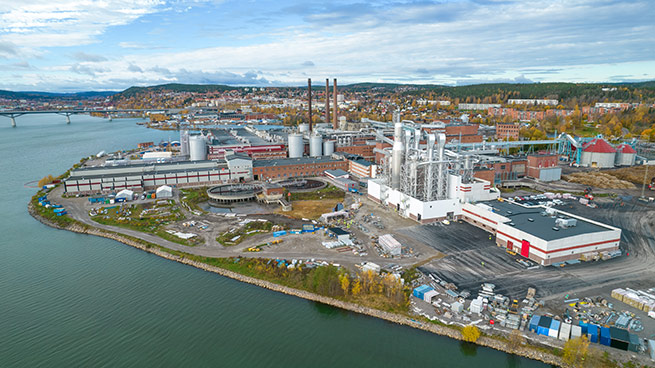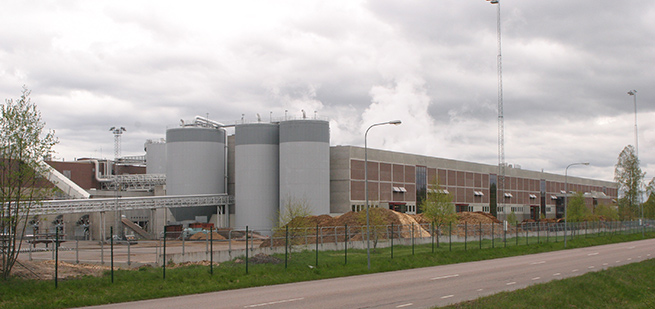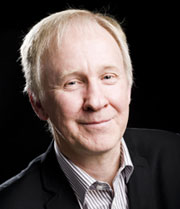In my last blog contribution I described the series of large investments that forest industry companies are doing in Sweden and Finland.
This time I highlight some examples of closures of large mills and that it can be the beginning of a new era for the industrial site where printing paper of various kinds was previously produced. Who would, e.g., have imagined that a closed large paper mill would become home to large-scale manufacturing of battery cathodes?
Mill closures and paper machine shutdowns are not something done for fun as this effects employees and local communities. But everything doesn't have to be pitch black, in many cases something new and good comes out of it. Here are some examples where demand has decreased to such an extent that closure was ultimately the only option and new businesses with better prospects are sprouting up.
My grandmother used to say that "it's not the same day every day", and the paper and pulp industry can subscribe to that. For a couple of centuries, the forest industry with its many mills has had to adapt in various ways to a changing reality, or in the worst case completely shut down. Businesses that once began with sawing timber in many cases transitioned to producing pulp and paper of various types demanded by the market. Paper qualities that once were needed have been rendered redundant by development. Examples of such products are stencil duplicator copy paper and suitcase board. Contemporary examples are newsprint and envelope paper, both of which have passed the zenith of their product life cycles.
 SCA has started CTMP production in the previous Ortviken paper mill. Photo: SCA.
SCA has started CTMP production in the previous Ortviken paper mill. Photo: SCA.
This is nothing new under the sun but still applies today. The difference is that earlier many of the mills that were shut down were small by today's standards, and not efficient enough and thus uncompetitive. Not infrequently, the machines were outdated and worn as a result of owners not having sufficient finances for powerful investments. Often there was also a lack of research and development capacity to find new products and ways forward.
If you look at what has happened in recent years, with paper machines and mills producing various printing papers, these truths do not fully apply. Now large and relatively modern paper machines have been closed, and in several cases converted to packaging paper, mainly intended for production of corrugated board but in some cases for folding boxboard. The machines have not been closed for technical reasons but because the market has drastically decreased.
In cases where paper machines are rebuilt for other production, the drama related to jobs is limited and belief in the future is rather strengthened by the owner investing in future products, as in Oulu in Finland and Husum in Sweden. If on the other hand a large mill closes the drama becomes all the greater but does not have to mean "the end of the world" as these examples show.
Stora Enso Kvarnsveden was not so long ago a large Swedish printing paper mill with a production capacity of 750,000 tonnes of newsprint and magazine papers. In April 2021 Stora Enso announced that for market reasons it was decided to shut down production and this was done in September the same year. In Sweden, SCA also had a paper mill of the same size with the same focus as Kvarnsveden which was closed in the first quarter of 2021. As a curiosity it can be mentioned that on the same morning that SCA announced its closure decision, UPM also announced the decision to close its mill in Kaipola, Finland, a mill with a capacity of 720,000 tonnes of newsprint and LWC paper. All three were large mills with great importance for their respective local communities, with many direct and indirect job opportunities. A fourth major change was Stora Enso's decision in 2019 to stop producing coated fine paper in Oulu, one of the largest mills of its kind in Europe with a capacity of one million tonnes.
The closure decisions are now a few years old, so what has happened, death and annihilation or investments for the future? In these cases new plants have arisen from the soil made up of the former areas of use. The mill in Oulu is the only one of the four former printing paper mills which, after rebuilding, uses all or parts of its two paper machines for new products. In 2021, PM7 was put into operation again after a rebuild for production of kraft liner and white top liner with a capacity of 450,000 tonnes/year. In a major project totalling one billion euros, PM6 is now being rebuilt for production of folding boxboard and coated unbleached kraft (CUK) and is expected to have a capacity of 750,000 tonnes. The package also includes investments in, among other things, wood handling, a BCTMP plant, biofuel boiler and in the sewage treatment plant. Start-up is planned to take place in 2025.
 Renewcell process worn-out jeans and other cotton textiles into dissolving pulp in Ortviken. Photo: Renewcell.
Renewcell process worn-out jeans and other cotton textiles into dissolving pulp in Ortviken. Photo: Renewcell.
In SCA's former newsprint and LWC mill Ortviken, two major operations started last autumn: production of CTMP as well as a unique dissolving cellulose. SCA has for many years produced CTMP pulps at its Östrand pulp mill. The capacity has been 90,000 tonnes and the raw material both spruce and birch. Before the closure of the paper mill in Ortviken there were plans for CTMP production which were implemented and now there is a CTMP mill with a capacity of 300,000 tonnes. CTMP production in Östrand will be phased out so that all CTMP is produced in Ortviken.
In one of Ortviken's former paper machine halls, Renewcell has established itself as the first manufacturer in the world with its own patented technology for dissolving cellulose production, entirely using worn-out cotton clothing such as jeans and the like as raw material. The requirement is that the raw material must contain at least 95 % cotton. In the first process step, the fabric is torn into approximately 2 x 2 cm pieces. Metal and plastic parts are separated, after which the fabric pieces are mixed with water and refined to shorten the fibres. After the bleaching and washing process steps, the synthetic fibres are separated by a patented method, pressed and burned. In the same way as for market pulp, the dissolving pulp is dried in a drying machine, sheeted, baled and then delivered to viscose and Lyocell producers.
In this way, an important step has been taken towards a more circular textile industry. There is great interest from the fashion industry and there are no problems finding customers. Out of 70,000 tonnes/year of worn-out clothes and waste from the textile industry, the plant when fully adjusted will produce 60,000 tonnes of dissolving cellulose for use as a drop-in product in viscose and Lyocell production. There are plans for a continued upscaling of the Renewcell business.
 Instead of paper production in Kvarnsveden, Nortvolt will manufacture cathode material for lithium-ion batteries.
Instead of paper production in Kvarnsveden, Nortvolt will manufacture cathode material for lithium-ion batteries.
At the beginning of 2021, UPM closed the mill in Kaipola with three paper machines. At the end of the same year, the mill area was sold to Kaipola Green Port, a privately owned property development company. Kaipola Green Port intends to develop the area for production operations and industrial logistics. However, details about their progress are missing.
When Stora Enso announced the decision to close Kvarnsveden's paper mill in Borlänge, it was one of the city's two largest industries. After a period of uncertainty came the news that the Swedish battery manufacturer Northvolt is buying the site to build a factory for the manufacture of cathode material for lithium-ion batteries. Instead of the approximately 400 employees that the paper mill had, Northvolt has the ambition to reach up to 1,000 employees when the operation is fully developed. Start-up is expected to take place at the end of 2024 and all preparations are in full swing. The collaboration with Stora Enso has continued and last year Stora Enso and Northvolt entered into a Joint Development Agreement to create a sustainable battery featuring anode produced using lignin-based hard carbon produced from Nordic forest wood.
It is of course a hard blow to the local community when a large paper mill closes, but the examples here show that it does not have to be hopeless. Changes have always occurred and continue to do so and from them a lot of good may come, but you need to think new, have knowledge of possible markets and not least access to capital. But on the other hand, these are factors that have always applied.
 Sören Back has been working in the Swedish pulp and paper industry since 1976. With an M.Sc. in chemistry with focus on in pulp and paper technology the career spans from production control, product development, sales and marketing to communications, including PR, primarily in managerial positions. Over the years Sören has worked for MoDo Paper, M-real, now Metsä Board, and SP Processum but is now running his own business, SB Kommunikation AB, as freelance writer and communications consultant with customers mainly within the pulp and paper industry.
Sören Back has been working in the Swedish pulp and paper industry since 1976. With an M.Sc. in chemistry with focus on in pulp and paper technology the career spans from production control, product development, sales and marketing to communications, including PR, primarily in managerial positions. Over the years Sören has worked for MoDo Paper, M-real, now Metsä Board, and SP Processum but is now running his own business, SB Kommunikation AB, as freelance writer and communications consultant with customers mainly within the pulp and paper industry.













